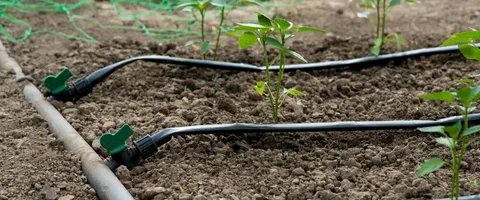How to Create a Low-Maintenance Garden on a Budget
A garden should be a place of enjoyment, not a never-ending source of stress and expenses. If you’re looking to create a garden that’s both low-maintenance and budget-friendly, it’s entirely possible with the right planning and choices. With a little creativity and smart decisions, you can design a beautiful garden that requires minimal upkeep and won’t break the bank.
1. Start with Easy-to-Grow Plants
The first step in a low-maintenance garden is choosing the right plants. Opt for hardy, drought-tolerant plants that require little care once established. Native plants are also a great choice since they’re well-suited to the local climate and soil, meaning they need less watering and attention.
Best choices:
- Lavender: A fragrant, low-maintenance herb that thrives in sunny spots.
- Sedum (Autumn Joy): Drought-tolerant and attractive in both spring and fall.
- Hostas: Great for shady areas and very low-maintenance.
- Coneflowers: Perfect for attracting pollinators and easy to grow.
2. Use Mulch to Reduce Weeds and Watering

Mulching is a gardener’s best friend when it comes to low-maintenance, budget-friendly gardening. A thick layer of mulch around your plants helps to suppress weeds, retain moisture in the soil, and improve soil quality as it decomposes.
Types of mulch:
- Wood chips or bark: Affordable and visually appealing.
- Straw or hay: Budget-friendly and easy to find.
- Grass clippings: Free if you’re already mowing your lawn!
3. Embrace Perennials Over Annuals
Annuals require replanting each year, which can be both time-consuming and expensive. Perennials, on the other hand, come back year after year, saving you money in the long run. Choose perennials that are well-suited to your climate and soil, and you’ll have a garden that thrives with little effort.
Great perennials for a low-maintenance garden:
- Daylilies: Extremely hardy and come in a variety of colors.
- Black-eyed Susans: These bright flowers attract pollinators and are very easy to grow.
- Peonies: Beautiful blooms with little maintenance.
4. Create Low-Maintenance Garden Zones
Design your garden with distinct zones that require different levels of care. You can create a low-maintenance zone with drought-tolerant plants and a decorative mulch bed, while dedicating a small area for more intensive care if desired. This allows you to minimize effort in high-traffic areas while maintaining some flexibility in others.
Examples:
- Low-care zone: Use mulch, ground covers, or ornamental grasses.
- Higher-care zone: Include more decorative plants or vegetables that need attention.
5. Use Ground Covers to Fill Empty Spaces
Ground covers are a great way to fill in areas where you don’t want to spend a lot of time weeding or worrying about bare spots. They naturally spread, reducing the need for frequent planting or replanting.
Great ground covers:
- Creeping thyme: Aromatic and attractive.
- Clover: A hardy, low-growing plant that requires minimal care.
- Ajuga: Provides lush foliage and occasional flowers.
6. Install Drip Irrigation or Soaker Hoses

One of the most labor-intensive aspects of gardening is watering, especially if you have a lot of plants. Installing a drip irrigation system or soaker hoses can save time, money, and water. These systems direct water to the roots, ensuring your plants get the right amount of moisture while reducing water wastage.
Benefits:
- Saves water and reduces water bills.
- No need for constant hand watering.
- Easy to install and maintain.
7. Incorporate Hardscaping for Low-Care Areas
Hardscaping elements like patios, walkways, and stone borders require little to no maintenance once installed. Use hardscaping to create focal points and functional spaces in your garden that reduce the amount of land you need to maintain.
Ideas for budget-friendly hardscaping:
- Gravel paths: Affordable and easy to install.
- Stone or brick edging: Defines plant beds and can be done cheaply with recycled materials.
8. Repurpose Materials for Garden Projects
Why buy new materials when you can repurpose items you already have? Old pallets, wood scraps, and even tires can be used to create raised beds, planters, or garden art, cutting down on costs significantly.
Repurposing ideas:
- Pallet garden beds: Perfect for small spaces and vertical gardening.
- Old containers: Use empty jars, cans, or pots to create unique planters.
- Used bricks or stones: Build simple garden borders or paths.
9. Limit Lawn Area
Lawns can be expensive and time-consuming to maintain. By reducing the size of your lawn, you can save on water, mowing, and fertilization. Consider replacing parts of your lawn with ground covers, flower beds, or even a vegetable garden to minimize the area that requires upkeep.
Alternatives to lawns:
- Mulched flower beds: Low-maintenance and add color.
- Grass alternatives like clover: Requires less water and care.
10. Plan for Seasonal Care
While a low-maintenance garden requires less upkeep, it’s important to plan for seasonal changes. Set aside time for pruning, cleaning up debris, and dividing perennials in the fall or spring. Regular light maintenance will ensure that your garden remains healthy and vibrant.
Final Thoughts
Creating a low-maintenance garden on a budget doesn’t mean sacrificing beauty. With careful plant selection, smart watering systems, and the right garden design, you can enjoy a beautiful outdoor space with minimal effort. By following these tips, you’ll spend less time maintaining your garden and more time relaxing and enjoying it.
